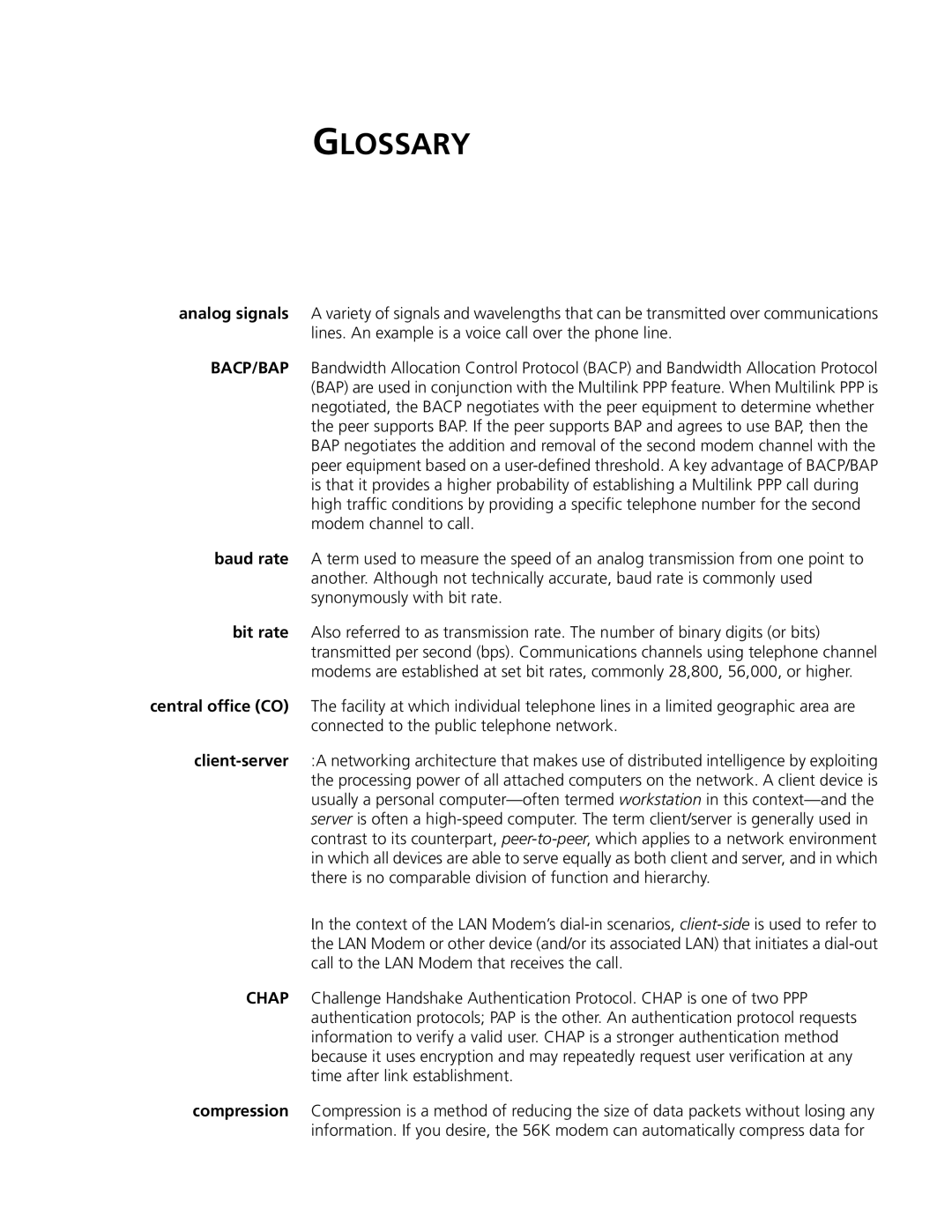GLOSSARY
analog signals A variety of signals and wavelengths that can be transmitted over communications lines. An example is a voice call over the phone line.
BACP/BAP Bandwidth Allocation Control Protocol (BACP) and Bandwidth Allocation Protocol (BAP) are used in conjunction with the Multilink PPP feature. When Multilink PPP is negotiated, the BACP negotiates with the peer equipment to determine whether the peer supports BAP. If the peer supports BAP and agrees to use BAP, then the BAP negotiates the addition and removal of the second modem channel with the peer equipment based on a
baud rate A term used to measure the speed of an analog transmission from one point to another. Although not technically accurate, baud rate is commonly used synonymously with bit rate.
bit rate Also referred to as transmission rate. The number of binary digits (or bits) transmitted per second (bps). Communications channels using telephone channel modems are established at set bit rates, commonly 28,800, 56,000, or higher.
central office (CO) The facility at which individual telephone lines in a limited geographic area are connected to the public telephone network.
In the context of the LAN Modem’s
CHAP Challenge Handshake Authentication Protocol. CHAP is one of two PPP authentication protocols; PAP is the other. An authentication protocol requests information to verify a valid user. CHAP is a stronger authentication method because it uses encryption and may repeatedly request user verification at any time after link establishment.
compression Compression is a method of reducing the size of data packets without losing any information. If you desire, the 56K modem can automatically compress data for
